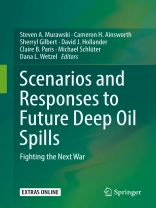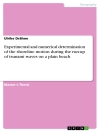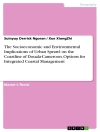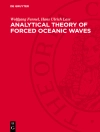It has often been said that generals prepare for the next war by re-fighting the last. The
Deepwater Horizon (DWH) oil spill was unlike any previous – an underwater well blowout 1, 500 meters deep. Much has been learned in the wake of DWH and these lessons should in turn be applied to both similar oil spill scenarios and those arising from “frontier” explorations by the marine oil industry. The next deep oil well blowout may be at 3, 000 meters or even deeper. This volume summarizes regional (Gulf of Mexico) and global megatrends in marine oil exploration and production. Research in a number of key areas including the behavior of oil and gas under extreme pressure, impacts on biological resources of the deep sea, and the fate of oil and gas released in spills is synthesized. A number of deep oil spills are simulated with detailed computer models, and the likely effects of the spills and potential mitigation measures used to combat them are compared. Recommended changes in policies governing marine oil exploration and development are proposed, as well as additional research to close critical and emerging knowledge gaps. This volume synthesizes state-of-the-art research in deep oil spill behavior and response. It is thus relevant for government and industry oil spill responders, policy formulators and implementers, and academics and students desiring an in-depth and balanced overview of key issues and uncertainties surrounding the quest for deep oil and potential impacts on the environment.
Cuprins
Section I Overview.- 1 Introduction to the volume.- 2 Deep-water oil and gas production in the Gulf of Mexico, and related global trends.- 3 Spilled oil composition and the natural carbon cycle: The true drivers of environmental fate and effects of oil spills.- Section II Geological, Chemical, Ecological and Physical Oceanographic Settings and Baselines for Deep Oil Spills in the Gulf of Mexico.- 4 An overview of the geologic origins of hydrocarbons and production trends in the Gulf of Mexico.- 5 Gulf of Mexico (Go M) bottom sediments and depositional processes: A baseline for future oil spills.- 6 Benthic faunal baselines in the Gulf of Mexico: A precursor to evaluate future impacts.- 7 Linking abiotic variables with macrofaunal and meiofaunal abundance and community.- 8 The asphalt ecosystem of the southern Gulf of Mexico: abyssal habitats across space and time.- 9 Geochemical and faunal characterization in the sediments off the Cuban north and northwest coast.- 10 Mapping isotopic and dissolved organic matter baselines in waters and sediments of Gulf of Mexico.- 11 Toward a predictive understanding of the benthic microbial community response to oiling on the northern Gulf of Mexico coast.- 12 Combining isoscapes with tissue-specific isotope records to re-create the geographic histories of fish.- 13 The utility of stable and radio isotopes in fish tissues as biogeochemical tracers of marine oil spill food web effects.- 14 Modernizing protocols for aquatic toxicity testing of oil and dispersant.- 15 Polycyclic aromatic hydrocarbon baselines in Gulf of Mexico fishes.- 16 Case Study: Using a combined laboratory, field, and modeling approach to assess oil spill impacts.- Section III Simulations of Future Deep Spills.- 17 Testing the effect of MOSSFA (Marine Oil Snow Sedimentation and Flocculent Accumulation) events in benthic microcosms.- 18 Physical processes influencing the sedimentation and lateral transport of MOSSFA in the NE Gulf of Mexico.- 19 Simulating deep oil spills beyond the Gulf of Mexico.- Section IV Comparisons of likely impacts from simulated spills.- 20 Comparison of the spatial extent, impacts to shorelines, and ecosystem and 4-dimensional characteristics of simulated oil spills.- 21 A predictive strategy for mapping locations where future MOSSFA events are expected.- 22 Connectivity of Gulf of Mexico continental shelf fish populations and implications of simulated oil spills.- 23 Evaluating the effectiveness of fishery closures for deep oil spills using a 4-dimensional model.- 24 As Gulf oil extraction goes deeper, who is at risk? Community structure, distribution, and connectivity of the deep-pelagic fauna.- 25 Evaluating impacts of deep oil spills on oceanic marine mammals.- 26 Comparative environmental sensitivity of offshore Gulf of Mexico waters potentially impacted by ultra-deep oil well blowouts.- Section V Preparing for and Responding to the Next Deepwater Spill.- 27 Preparing for the inevitable: ecological and indigenouscommunity impacts of oil spill-related mortality in the United States Arctic marine ecosystem.- 28 Summary of contemporary research on use of chemical dispersants for deep sea oil spills.- 29 Perspectives on research, technology, policy and human resources for improved management of ultra-deep oil and gas resources and responses to oil spills.- Index.
Despre autor
Steven A. Murawski is a Professor and Downtown Partnership/Peter Betzer Endowed Chair of Biological Oceanography at the University of South Florida. Murawski currently serves as director of the C-IMAGE consortium conducting interdisciplinary oil-spill related research. Prior to his current position, he was Director of Scientific Programs and Chief Science Advisor for the US National Marine Fisheries Service. He is a fishery biologist with interests in population and ecosystem ecology and dynamics. He has published nearly 200 journal articles, technical reports and book chapters. Awards include the Department of Commerce Gold Medal. His Ph.D. is in Wildlife and Fisheries Biology from the University of Massachusetts-Amherst.
Cameron H. Ainsworth is an Associate Professor of Fisheries Science at the University of South Florida. He uses ‘end-to-end’ models and other means to study anthropogenic influences on marine ecosystems. His recent work has considered fishing, climate change and oil spills as drivers of ecosystem change. He keeps an applied focus, working with NOAA and state fisheries managers on common research themes and serving as a member of the Ecosystem Science and Statistical Committee of the Gulf of Mexico Fisheries Management Council. He has published over 100 peer-reviewed and technical articles. Awards include a Sloan Research Fellowship for early career scientists and an Outstanding Faculty Award. His Ph.D. is in Resource Management and Environmental Studies from the University of British Columbia in Vancouver, Canada.
Sherryl Gilbert is the assistant director of the C-IMAGE consortium operated at the College of Marine Science at the University of South Florida. Gilbert has served as the center’s operational core since 2011, coordinating research and management efforts. Prior to 2011, Gilbert was the technicaldirector of the Ocean Modeling and Prediction Laboratory and was heavily involved in ocean sensor development, testing, and its application to study coastal processes. She is a physical oceanographer with broader interests in Gulf conservation efforts. Ms. Gilbert holds a M.S. in Marine Science from the University of South Florida.
David J. Hollander is a Professor of Chemical Oceanography and Sedimentary Geochemistry at the University of South Florida. Hollander currently serves as the Chief Science Officer developing and overseeing the wide scope of interdisciplinary scientific activities conducted by C-IMAGE. Since the Deepwater Horizon Blowout event in 2010, he has played a critical role in scientific discovery, public communications of findings, and influencing the research, response efforts and policies of federal agencies. He is an isotope and molecular organic geochemist focusing on climate, environment and ecosystem changes at both natural and anthropogenic time-scales. He has over 100 peer-reviewed paper and received his Ph.D. from the Swiss Federal Institute of Technology (ETH-Zurich).
Claire B. Paris-Limouzy is a Professor of Ocean Sciences at the Rosenstiel School of Marine and Atmospheric Sciences. Paris is a PI for the C-IMAGE consortium, leading oil-spill modeling research. She is a biological oceanographer with interests in larval ecology and biophysical interactions. She has over 170 publications, including the probabilistic open-source Connectivity Modeling System used worldwide to predict dispersion and population connectivity and in NOAA fisheries stock assessment. She is President-Elect of the Early Life History section of the American Fishery Society and the 2018 AGU Rachel Carson Lecturer. Paris is interdisciplinary at heart with a Ph.D. is in Coastal Oceanography from the State University of New York at Stony Brook.
Michael Schlüter owns the Chair of‘Fluid Mechanics for Multiphase Systems’ at the Hamburg University of Technology and is head of the Institute of Multiphase Flows. He also serves as coordinator of the DFG Priority Program “Reactive Bubble Columns“ and as President of the Working Party on “Multiphase Fluid Flow“ in the European Federation of Chemical Engineering. His research interest is primarily in the field of multiscale transport phenomena in chemical and bioprocess engineering, reactor development, design and scale-up. He has published over 50 papers and completed work on more than 15 books.
Dana L. Wetzel is a Senior Scientist, Program Manager of the Environmental Laboratory for Forensics, and Eminent Scholar at Mote Marine Laboratory. Her research focuses on sublethal effects of chemical contaminant exposure on essential biochemical processes in marine organisms from corals to polar bears. Wetzel has served on panels to develop and assess protocols for oil spill response researchand for oil dispersant use in the Arctic. Her Ph.D. is in Chemical Oceanography from the University of South Florida, where she was the recipient of both the Robert M. Garrels and Gulf Oceanographic Charitable Trust Fellowships.












